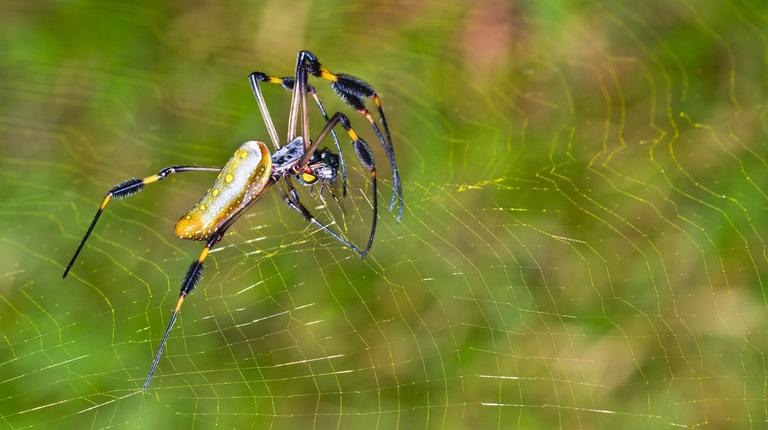Banana Spiders: Are They Dangerous?
Published: September 25, 2024

Banana spiders, with their striking appearance and intriguing behaviors, often evoke curiosity and concern. This blog post delves into the world of banana spiders, shedding light on their identification, behaviors, habitats, and potential dangers to humans and pets. Additionally, we'll explore some fascinating facts about these remarkable arachnids.
What Are Banana Spiders?
The term "banana spider" can refer to several species of spiders known for their vibrant colors and large sizes. The most commonly referred species is the Golden Silk Orb-Weaver (genus Nephila), named for the golden hue of its silk. Another notable mention is the Brazilian Wandering Spider (genus Phoneutria), which gained notoriety due to its appearance in banana shipments.
How to Identify Banana Spiders
Physical Characteristics
Golden Silk Orb-Weavers:
- Color: Bright yellow bodies with brown or black markings.
- Size: Females are significantly larger than males, with body lengths up to 2 inches (5 cm) and leg spans reaching 5 inches (12 cm).
- Webs: Large, intricate webs with a characteristic golden sheen.

Brazilian Wandering Spiders:
- Color: Brown or grayish bodies with distinctive red hairs on their venom glands.
- Size: Can grow up to 2 inches (5 cm) in body length.
- Behavior: Unlike web-weaving spiders, they are active hunters that do not rely on webs for capturing prey.

Behaviors and Preferred Habitats
Golden Silk Orb-Weavers
These spiders are known for their impressive web-building skills. They construct expansive webs in forested areas, gardens, and fields where they can catch a variety of flying insects. Their webs are often found between trees or shrubs at varying heights.
Brazilian Wandering Spiders
True to their name, these spiders wander the forest floor at night in search of prey. They prefer tropical regions and are commonly found in South America’s rainforests. During the day, they seek shelter under logs or within dense foliage.
Are Banana Spiders Dangerous?
Golden Silk Orb-Weavers
Golden Silk Orb-Weavers possess venom like all spiders; however, it is not harmful to humans or pets unless an allergic reaction occurs. Their bites may cause mild pain similar to a bee sting but generally do not require medical attention.
Brazilian Wandering Spiders
In contrast, Brazilian Wandering Spiders have potent venom that can pose serious health risks. Bites from these spiders can cause intense pain, muscle spasms, increased heart rate, and even more severe symptoms if left untreated. Immediate medical attention is crucial if bitten by one of these spiders.
Interesting Facts About Banana Spiders
- Silk Strength: The silk produced by Golden Silk Orb-Weavers is incredibly strong and has been studied for potential applications in materials science due to its durability.
- Sexual Dimorphism: In many banana spider species such as Nephila clavipes (a type of Golden Silk Orb-Weaver), females are much larger than males—a phenomenon known as sexual dimorphism.
- Medical Research: The venom of Brazilian Wandering Spiders contains compounds being researched for potential medical applications including treatments for erectile dysfunction.
- Cultural Significance: In some cultures, banana spiders are considered symbols of good fortune or protection against evil spirits.
Conclusion
Banana spiders encompass a diverse group of arachnids that captivate our interest through their unique characteristics and behaviors. While most species pose no significant threat to humans or pets beyond minor bites akin to bee stings, caution should be exercised around more dangerous types like the Brazilian Wandering Spider due to their potent venom.
Understanding these remarkable creatures helps demystify them and fosters respect for their role in our ecosystems—whether through controlling insect populations or contributing valuable insights into scientific research.